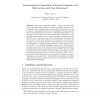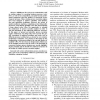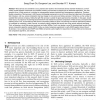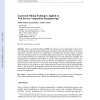GI
2010
Springer
14 years 3 months ago
2010
Springer
Abstract: Preference elicitation is often used in e-services to create product recommendations for their customers. We present an approach for applying preference elicitation techn...
ICWS
2009
IEEE
14 years 3 months ago
2009
IEEE
Traditionally, the composition of Web services to create mashups has been achieved by using an application server as a mediator between a client browser and services. To avoid thi...
ICIW
2009
IEEE
14 years 3 months ago
2009
IEEE
Autonomic, i.e. dynamic and fault-tolerant Web service composition is a requirement resulting from recent developments such as on-demand services. In the context of planning-based...
SEMWEB
2010
Springer
14 years 4 months ago
2010
Springer
Web service composition (WSC)
SEMWEB
2010
Springer
14 years 4 months ago
2010
Springer
Abstract. Much of the research on automated Web Service Composition (WSC) relates it to an AI planning task, where the composition is primarily done offline prior to execution. Rec...
123
click to vote
APSCC
2010
IEEE
14 years 4 months ago
2010
IEEE
Middleware for web service orchestration, such as runtime engines for executing business processes, workflows, or web service compositions, can easily become performance bottleneck...
TSC
2008
14 years 6 months ago
2008
Web service composition (WSC) techniques assume that the parameters used to model the environment remain static and accurate throughout the composition's execution. However, W...
TSC
2008
14 years 6 months ago
2008
Web services are considered to be a potential silver bullet for the envisioned Service Oriented Architecture, in which loosely coupled software components are published, located, a...
SOCA
2008
IEEE
14 years 6 months ago
2008
IEEE
There is no doubt that SOA and BPM will continue to evolve dependently for the next ten years. Preparing common research infrastructures will require most important efforts of web ...
JWSR
2008
2008
DsCWeaver: Synchronization-Constraint Aspect Extension to Procedural Process Specification Languages
14 years 6 months ago
BPEL is emerging as an open-standards language for Web service composition. However, its procedural style can lead to inflexible and tangled code for managing a crosscutting aspec...





